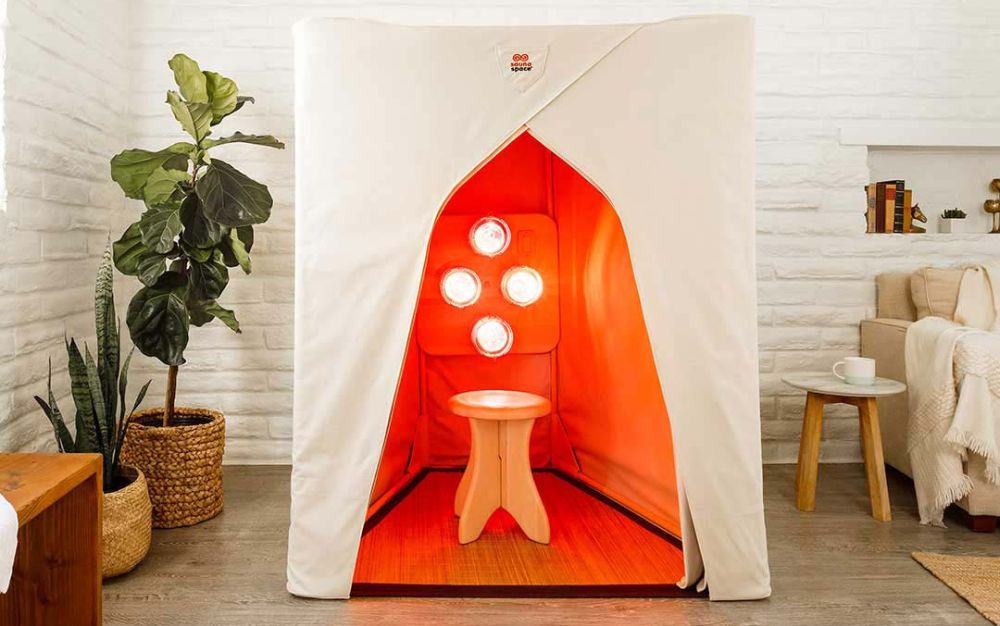Introduction
Reader Beyondfitwell.com, welcome to our comprehensive guide on how to reset your Health-O-Meter scale. Your well-being is of utmost importance to us, and we understand the significance of maintaining accurate readings for tracking your progress. In this article, we will provide you with a step-by-step guide to rejuvenate your well-being by resetting your Health-O-Meter scale. Whether you are a fitness enthusiast or someone embarking on a health transformation journey, resetting your scale will ensure accurate measurements and reliable data.
Resetting your Health-O-Meter scale is essential for maintaining accurate readings and reliable data, which are crucial for tracking your progress and achieving your health and fitness goals. By following our step-by-step guide, you will be able to reset your scale with ease and ensure that your measurements are precise and trustworthy.
Whether you are a fitness enthusiast who wants to monitor your weight and body mass index (BMI) accurately or someone who is embarking on a health transformation journey, resetting your scale is a proactive step towards taking control of your well-being. Inaccurate readings can hinder your progress and make it difficult to make informed decisions about your fitness and nutrition plans. By resetting your scale, you can start with a clean slate and have confidence in the data it provides.
Resetting your scale also plays a crucial role in overcoming calibration issues. Over time, scales can drift and display strange readings or error messages, indicating calibration discrepancies. These issues can arise from accidental bumps or changes in battery power. Resetting your Health-O-Meter scale resets the internal settings, eliminating any calibration problems and ensuring that you receive reliable measurements.
Accurate measurements are not only important for tracking your progress and making adjustments to your fitness and nutrition plans but also for effective health management. Maintaining accurate readings allows you to monitor your weight changes, body mass index (BMI), and other vital measurements correctly. It empowers you to make informed decisions about your health and well-being.
Additionally, resetting your Health-O-Meter scale is a straightforward process that can be easily executed with our step-by-step guide. By following the instructions provided, you can access the reset function of your scale and initiate the resetting process. It is crucial to ensure that your scale is placed on an even and stable surface, free from dust and debris, to achieve accurate results.
Regular maintenance and care of your Health-O-Meter scale are also essential to maintain its accuracy and functionality. Cleaning the scale regularly with a soft, damp cloth ensures that it is free from any residue or debris that can interfere with its performance. Avoid using harsh chemicals or abrasive materials that could damage the scale. Placing the scale on a protective mat or carpet square can prevent scratches or damage to both the scale and your floors.
In conclusion, resetting your Health-O-Meter scale is a crucial step towards maintaining accurate measurements and reliable data for effective health management. By following our step-by-step guide and taking regular maintenance and care measures, you can ensure the longevity and performance of your scale. Trustworthy readings are essential for tracking your progress and making informed decisions about your health and fitness goals. Reset your Health-O-Meter scale today and take control of your well-being.
If you’re looking to reset your health-o-meter scale, follow our detailed instructions on our pillar article about health and wellness.
Section 1: Why Resetting Your Health-O-Meter Scale Matters
Resetting your Health-O-Meter scale is an essential step in ensuring accurate and precise tracking of your health and well-being. Over time, scales can experience drift and provide inaccurate readings, which can hinder your progress tracking and goals. By taking the time to reset your scale, you can start with a clean slate and regain confidence in the measurements it provides.
Subheading: Ensuring Accuracy for Precise Tracking
One of the primary reasons for resetting your Health-O-Meter scale is to ensure accuracy in your weight and other health measurements. Inaccurate readings can lead to misinformation and can make it difficult for you to monitor your progress effectively. By resetting your scale, you can eliminate any inconsistencies and deviations, allowing for precise tracking of your weight changes, body mass index (BMI), and other essential measurements.
Accurate measurements are vital for assessing your progress and making informed decisions about your fitness and nutrition plans. By having precise data, you can make the necessary adjustments and effectively achieve your health objectives.
Subheading: Overcoming Calibration Issues
Calibration issues can occur with your Health-O-Meter scale, causing it to display strange readings or error messages. These issues can arise from accidental bumps, changes in battery power, or other external factors. Resetting the scale can often resolve these problems and restore its functionality.
Resetting the scale resets its internal settings, eliminating any calibration discrepancies that may have arisen. This ensures that the readings provided by the scale are reliable and accurate. A properly calibrated scale is crucial for effective health management, as it allows you to trust the measurements it provides.
By going through the reset process, you can address any calibration inconsistencies and have confidence in the readings of your Health-O-Meter scale.
Whether you are a fitness enthusiast or someone embarking on a health transformation journey, resetting your Health-O-Meter scale is a proactive step towards maintaining accurate measurements. It allows you to start fresh and ensure reliable data for effective tracking of your progress. By following the step-by-step guide provided in this article, you can reset your scale with ease and achieve enhanced accuracy in your health management.
Remember, maintaining accurate measurements not only facilitates progress tracking but also enables you to make informed decisions about your fitness and nutrition plans, ultimately helping you achieve your health objectives effectively.
Section 2: How to Reset Your Health-O-Meter Scale
Subheading: Step 1: Preparation
Before resetting your Health-O-Meter scale, it is crucial to ensure that the scale is placed on an even and stable surface. This step is important because an uneven or unstable surface can affect the accuracy of the reset process. Additionally, remove any objects or items from the scale that could potentially interfere with the reset process. Dust and debris can also impact the functionality of the scale, so it is important to clean the scale and ensure it is free from any such particles.
Once you have carefully prepared the scale, you can proceed to the next step and begin the resetting process.
Subheading: Step 2: Accessing the Reset Function
Accessing the reset function of your Health-O-Meter scale may vary depending on the model. Typically, you will find a reset button or a combination of buttons that need to be pressed in a specific sequence. To identify the reset function for your specific scale model, refer to the user manual that was provided with your device. The user manual will offer detailed instructions on how to access and utilize the reset feature specifically designed for your scale.
Once you have located the reset function according to the user manual, you can proceed to the next step in the resetting process.
Subheading: Step 3: Executing the Reset
Now that you have identified the reset function of your Health-O-Meter scale, it is time to execute the reset. Follow the instructions provided in the user manual to initiate the reset function effectively. This typically involves either holding down the reset button or pressing the designated combination of buttons for a specific period of time. It is important to make sure that you are following the correct sequence or timing for the reset process to activate successfully.
During the reset process, you may notice some changes on the scale’s display, such as flashing lights or specific symbols. These indications assure you that the reset process is in progress.
It is important to be patient and allow the reset process to complete without interrupting the scale. Interrupting the process may result in incomplete resetting and could potentially affect the accuracy of future measurements.
Once the reset process is complete, you can proceed to use your Health-O-Meter scale, confident in its accuracy and reliability.
To learn more about health and wellness, visit our category on health.
Section 3: Maintenance and Care Tips
Subheading: Cleaning and Protecting Your Scale
Maintaining the cleanliness and integrity of your Health-O-Meter scale is vital to ensure accurate and reliable measurements. Regular cleaning prevents the build-up of dirt, dust, and other particles that could compromise the scale’s functionality and accuracy.
When cleaning your scale, use a soft, damp cloth to gently wipe the surface. Avoid using harsh chemicals or abrasive materials as they can damage the scale’s sensitive components. Ensure that the cloth is only slightly damp to prevent moisture from seeping into the scale and causing damage.
Additionally, it is beneficial to place a protective mat or carpet square underneath your scale. This protective layer safeguards both your floors and the scale from scratches and other potential damage. By taking these preventative measures, you can prolong the lifespan of your Health-O-Meter scale and maintain its optimal performance.
Subheading: Replacing Batteries for Consistency and Accuracy
As the batteries in your Health-O-Meter scale age, their performance may diminish, leading to inaccurate measurements. To ensure consistent and reliable readings, it is crucial to replace the batteries regularly following the manufacturer’s recommendations.
Many Health-O-Meter scale models feature display symbols that indicate a low battery level. Keep an eye out for these symbols as they serve as a reminder to replace the batteries promptly.
When replacing the batteries, consult the user manual that came with your scale. The manual will provide detailed instructions regarding the correct battery type and installation process. It is important to use the specified battery type to optimize the scale’s functionality and accuracy.
By keeping fresh batteries in your scale, you can have confidence in the accuracy of your measurements, allowing you to effectively monitor your well-being and track your health progress over time.
Subheading: Regular Maintenance for Longevity and Precision
In addition to cleaning and battery replacement, there are other maintenance practices you can adopt to maximize the longevity and precision of your Health-O-Meter scale.
Firstly, avoid placing heavy objects on the scale or dropping it, as these actions can damage the internal components and affect its calibration. Treat your scale with care and use it only for its intended purpose.
Furthermore, store your scale in a dry and temperate environment. Exposure to extreme temperatures or high humidity levels can negatively impact the scale’s performance and accuracy. Avoid storing it near windows or in areas prone to moisture or temperature fluctuations.
Lastly, periodically check for any loose connections or parts and ensure that the scale’s display is clear and readable. If you notice any abnormalities or issues, consult the user manual or reach out to the Health-O-Meter customer service for further assistance.
By implementing these maintenance practices, you can prolong the lifespan of your Health-O-Meter scale, maintain its precision, and continue to rely on it for accurate health measurements.
Check out our health category for tips and tricks on resetting your health-o-meter scale.
Section 4: Troubleshooting Common Issues
Subheading: Display Errors
If your Health-O-Meter scale displays an error code or strange symbols, it may indicate an issue with the internal settings or hardware. These errors can be frustrating and may prevent you from accurately tracking your progress. To address display errors, begin by resetting the scale as mentioned in the previous sections. Resetting the scale often resolves minor software glitches and restores normal functionality.
If the error persists even after resetting the scale, consult the user manual for troubleshooting guidance. The user manual provides specific instructions based on the scale’s model and can help you identify the cause of the display error. It may offer additional steps to reset or troubleshoot the scale further.
If you are still unable to resolve the display error, consider reaching out to Health-O-Meter’s customer service for further assistance. The customer service representatives are trained to help users troubleshoot common issues and provide solutions to technical problems. They can guide you through advanced troubleshooting steps or provide information on repair or replacement options if needed.
Subheading: Inconsistent Readings
If your Health-O-Meter scale provides inconsistent readings, it can be frustrating and may undermine your progress tracking efforts. To ensure accurate readings, it is important to follow the correct weighing procedure.
Start by standing still and balanced on the scale, placing your feet evenly on the designated measurement area. Avoid moving or shifting during the weighing process, as any movement can affect the accuracy of the readings. It is best to maintain a stable posture until the scale displays a stable weight.
If you are following the correct weighing procedure but still experience inconsistent readings, recalibrating the scale might help. Refer back to the reset process mentioned earlier in this article to initiate the recalibration. Recalibrating the scale resets the internal settings, which can resolve minor calibration issues that may contribute to inconsistent readings.
If recalibrating the scale does not resolve the issue of inconsistent readings, it is advisable to contact the manufacturer for further troubleshooting assistance. They can provide guidance on advanced recalibration steps or offer insights into any underlying hardware issues that may be causing the inconsistency. Depending on the warranty coverage, they may also provide repair or replacement options to ensure the accuracy of your measurements.
Overall, troubleshooting common issues with your Health-O-Meter scale is essential for maintaining accurate measurements and achieving reliable data. By following the steps outlined in this article and seeking assistance when needed, you can ensure that your scale continues to provide precise readings for effective health management.
Section 5: Conclusion – Taking a Proactive Approach to Your Well-being
Reader Beyondfitwell.com, by resetting your Health-O-Meter scale, you are taking a proactive step towards rejuvenating your well-being. Accurate measurements are crucial for effective health management, allowing you to track progress and make informed decisions about your fitness and nutrition plans.
Resetting your scale not only ensures accurate readings but also allows you to start fresh on your health journey. It provides a clean slate, untainted by previous measurements, and allows you to set new goals and targets.
By following the step-by-step guide provided in this article, you can reset your scale with ease and achieve reliable readings. Remember, resetting your scale is not a one-time task but rather a part of regular maintenance and care.
Maintaining Regular Maintenance and Care
Regular maintenance and care of your Health-O-Meter scale are essential to keep it functioning optimally. Here are some additional tips to ensure the longevity and accuracy of your scale:
Cleaning: Clean your scale regularly using a soft, damp cloth. This helps to remove any residue or debris that may affect its functionality. Avoid using harsh chemicals or abrasive materials that could damage the scale.
Battery Replacement: Weak batteries can affect the performance of your scale and provide inaccurate readings. To ensure reliable measurements, replace the batteries regularly as recommended by the manufacturer. Look for specific display symbols that indicate low battery levels.
Protective Mat: Consider placing your scale on a protective mat or carpet square to prevent any scratches or damage to both the scale and your floors.
Seeking Assistance for any Issues
If you encounter any issues with your Health-O-Meter scale, refer to the troubleshooting tips provided in the user manual. These tips can help you resolve common problems and ensure the accurate functioning of your scale.
If the problem persists or you require further assistance, do not hesitate to contact the Health-O-Meter customer service. They have a dedicated team of experts who can provide guidance and support.
Your well-being is our priority, and we hope this comprehensive guide has been valuable in helping you reset your Health-O-Meter scale for optimal health management. Remember to reset your scale periodically, maintain regular maintenance and care, and make the most of accurate measurements to achieve your health goals effectively. By taking a proactive approach to your well-being, you are empowered to make positive and informed decisions towards a healthier lifestyle.





